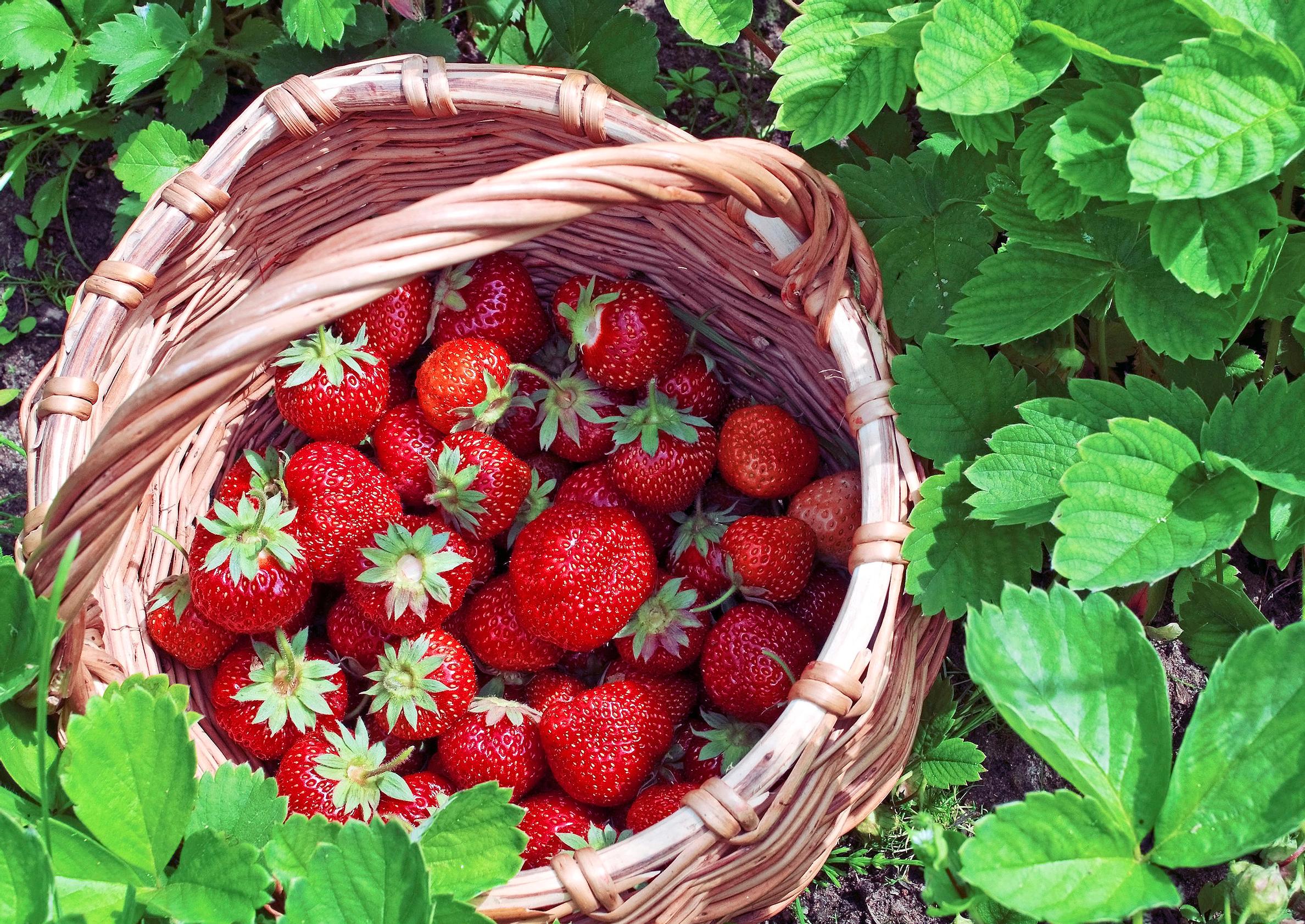
Planting and growing strawberries—follow these clear instructions and enjoy the harvest
For many, strawberries are the ultimate summer treat. Growing and planting strawberries is straightforward as long as you choose a sunny location, prepare loose soil, and use healthy seedlings.
The strawberry, also known as the garden strawberry, is part of the rose family. It is a hybrid of two American species, created by a happy accident in Europe. The parent species, the Virginia strawberry and the Chilean strawberry, were introduced to France in the 1600s and 1700s. The Virginian species produced many small, tasty berries, while the Chilean species produced walnut-sized ones. These species were likely cultivated side by side in a garden, and eventually, they crossbred. From the resulting vigorous seedlings, gardeners selected the healthiest, most high-yielding, and largest berries, marking the beginning of the strawberry’s triumphal march in gardens.
The more sunlight a strawberry receives, the more sugar it accumulates and the sweeter it tastes. The berries are high in water content but also provide fiber, an amount of vitamin C comparable to an orange, and beneficial folates.
Garden strawberries can be grown even in Lapland in northern Finland. A successful harvest can be achieved by using healthy seedlings, selecting a winter-hardy variety, and planting in a sheltered location. Strawberries can also be grown in hanging baskets or balcony boxes.
In addition to garden strawberries, you can grow small wild strawberries and their intermediate size, the alpine strawberry. Grow alpine strawberry seedlings from seeds and divide the plants every few years.
How to succeed in growing and planting strawberries
Growing medium
Strawberries should be planted in well-draining soil that is rich in humus and sandy. Improve the soil with well-rotted compost, low-nitrogen berry fertilizer, or fall fertilizer. The ideal pH is about 6–6.5. If the soil is very acidic, you can neutralize the pH with lime or ash. Additionally, remove perennial weeds from the growing area of the strawberry.
Suitable light and growing location for strawberries
Strawberries should be planted in a sunny and sheltered location. For instance, a south or west slope provides suitable conditions for growth.
Strawberry seedlings
Opt for healthy purchased seedlings to help keep strawberry mites at bay.
Mulch
Cover rows with black landscape fabric. You can apply the same fabric, bark or sawdust to the gaps between the rows. Grass kept short with a lawnmower is also suitable.
Planting the strawberries
The optimal time for planting strawberries is before mid-June or in August. Plant sparsely so that seedlings dry quickly and gray mold does not infect the plants. Ensure there is at least 40 cm between plants and 80 cm between rows.
When planting in open ground, ensure the seedling is at the same depth as it was in its pot. The growth point, located at the junction of the leaves, must be above the soil; otherwise, the seedling will not grow.
Fill the edges of the planting hole with soil and compact it by pressing down by hand. Finally, water generously.
Watering the strawberries
When watering strawberries, avoid wetting the leaves, berries, and green fruits. Strawberries need water when the berries are plumping up.
Pest control
In spring, protect strawberries against pests, such as the sloe bug and strawberry leaf beetle, with a cover that you remove during the day. To prevent bird damage, place stones painted red in the strawberry field just before the berries ripen. A tightly stretched net a couple of meters above the field can also help keep birds away.
Strawberry care
Gently brush strawberry plants in spring to remove dry leaves, pests, and mold spores. Fertilize in spring with fertilizer granules and in August with nitrogen-free fall fertilizer. Ensure overwintering by covering the plants with frost cloth or a double-layered plant cover before winter.
Relocating the strawberry
Relocate strawberry plants to a new area every 3–5 years to prevent the spread of diseases and pests.
Examples of old and new strawberry varieties
- ’Polka’: A healthy and vigorous Dutch variety. It yields abundantly and is easy to pick. The berry is fairly large, dark red, firm, round, and conical. A sweet strawberry suitable for eating fresh, making jam, and freezing. Winter-hardy.
- ’Bounty’: Fairly healthy with upright and strong growth. The yield is late but very abundant. The berry is fairly large, conical, and firm. Sweet and thoroughly dark red. Suitable for eating fresh, freezing, and preserving. Overwinters variably; a cover helps.
- ’Honeyoe’: Fairly healthy, tall, and sparse-growing North American variety. The yield is early and abundant. The berry is fairly large, conical, dark red, and somewhat firm. The taste is mild and slightly tart. Suitable for freezing and as a decorative berry. Winter damage may occur in snowless winters from Central to Northern Finland.
- ’Kulkuri’: A new, healthy Finnish variety with excellent mold resistance. It has a late, long harvest season. The berry is fairly large and soft but withstands freezing. Strong flavor. Winter hardiness is unknown.
- ’Kaunotar’: New, fairly healthy, and moderately growing Finnish variety. The yield is early and moderate. The berry is round and wedge-shaped and red inside. Good taste. Winter hardiness is unknown.
- ’Kent’: A healthy Canadian variety with strong and spreading growth habit. Produces many runners. Good winter hardiness. The yield is usually abundant. The berry is large, conical, firm, and brick red. The taste is mild and slightly tart. Requires protection with a cover in winter.


